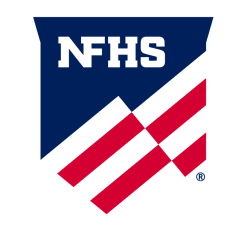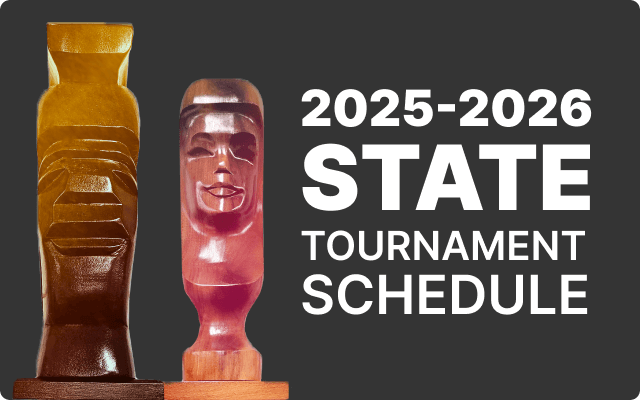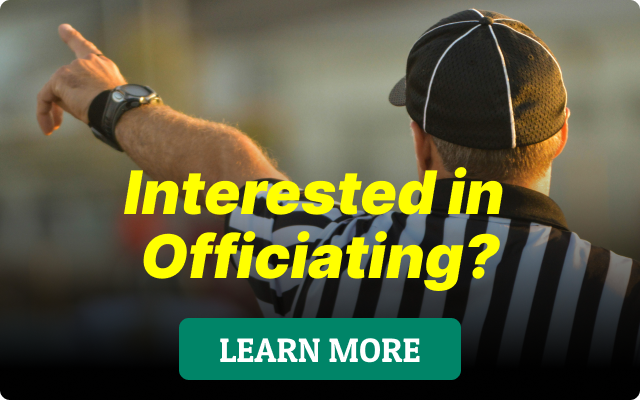INDIANAPOLIS, IN (February 1, 2019) — An overhaul of uniform-related rules and an adjustment to team roster submissions were among the most notable rules changes identified for the 2019-20 high school volleyball season.
All rules changes were recommended by the National Federation of State High School Associations (NFHS) Volleyball Rules Committee at its January 6-8 meeting in Indianapolis and subsequently approved by the NFHS Board of Directors.
“The sport of volleyball continues to be in a really good place,” said Lindsey Atkinson, NFHS director of sports and liaison to the Volleyball Rules Committee. “The rules committee focused its changes this year on improving the administration of the match by taking into account the feedback it received via the 2018 NFHS Volleyball Rules Questionnaire.”
The changes in uniform rules are a part of Rule 4-2, which reorganizes the uniform rule to improve understanding and eliminate solid-colored uniform requirements.
Rule 4-2-1, which permits teammates to wear like-colored uniform pieces, was expanded to include all uniforms and involves nine guidelines.
Rule 4-2-1a states that all uniform tops (with the exception of the libero, as noted in Rule 4-2-2) and bottoms shall be like-colored. Rule 4-2-1e permits the top and/or bottom of all uniforms to include the school’s name, nickname, logo, mascot and/or team member’s name. In doing so, a single mascot reference and/or school name may be placed on the sleeve(s), and shall not exceed either 4 inches by 4 inches or 3 inches by 5 inches.
“The rules committee was very deliberate and measured in their language choices to ensure that all currently compliant libero and team uniforms will be compliant under the new rule,” Atkinson said. “The committee believes that this new rule will, in fact, be easier to apply and require less policing by both officials and state associations.”
In Rule 4-2-2, the libero’s uniform must clearly contrast from the predominant color(s) of the team uniform top, excluding trim. The libero’s uniform top cannot be made up solely of the same predominant color(s) of the team’s uniform top, even if the like color(s) are placed differently on the uniform top. Furthermore, numbers shall meet all specifications in Rule 4-2-4, which removes the option for players to wear No. 00 to eliminate confusion surrounding the signaling of the number.
Beginning July 1, 2023, a plain, Arabic numeral of a solid, clearly contrasting color from the body of the uniform will be required. The change eliminates the use of a border to create the number contrast, therefore, allowing officials and scorers to easily identify uniforms numbers while aligning the rule with that of other rules codes.
In dealing with the submission of team rosters, sections of Rules 5-7 were modified to eliminate warmup interruptions by officials requesting rosters with 10 minutes remaining on the warmup clock. The change creates a smoother warmup process for coaches, players and officials.
Rules 5-5-1b, 5-6-1b and 7-1-1a clarified the specific duties of the second referee, official scorer and coach during the prematch setting. Before the match, the second referee shall assist the first referee by collecting each team roster during the timed prematch conference and supervise the placement of the officials’ table and team benches.
As part of Rule 5-6-1b, the official scorer shall now also receive each team’s roster from the second referee at the conclusion of the prematch conference. In Rule 7-1-1a, a coach from each team shall submit in writing to the second referee an accurate roster with names and uniform numbers of all players during the timed prematch conference. Roster changes may be made until 10 minutes remain on the pregame clock.
“The logistical change of when, and to whom, the roster shall be submitted was again the result of questionnaire feedback,” Atkinson said. “In an effort to improve the flow of the prematch requirements, the committee felt that the submission of the roster as a part of the prematch conference, with the ability to make changes until 10 minutes remaining on the clock, allowed for a more efficient process and alleviated the scorer of the responsibility to collect team rosters.”
The committee made additional changes that impact officials, including aligning rules regarding the treatment by officials of a ball striking either the cables and/or the diagonal poles used to retract ceiling-suspended net systems. This change in Rules 2-3j, 2-4-1e and 2-4 PENALTY 3 treats cables and diagonal poles as restricted play at which time officials must determine if the ball was playable. The committee’s change to Rule 5-9-2 NOTE places the line judge in a more appropriate position to watch for foot contact with the end line, as well as allowing him or her to quickly transition back into position for a view of the sideline.
The final change involved the removal of Rule 8-2-6d and adoption of new Rule 8-2-5g, which establishes that a serve is illegal, and the ball remains dead, if the server tosses the ball for serve and the ball touches any part of a backboard or its supports hanging in a vertical position over the serving area and not a service fault.
A complete listing of the volleyball rules changes will be available on the NFHS website at
www.nfhs.org. Click on “Activities & Sports” at the top of the home page and select “Volleyball.”
According to the 2017-18 NFHS High School Athletics Participation Survey, volleyball is the second-most popular sports for girls (trailing track and field) with 446,583 participants in 16,434 schools nationwide. In addition, there are 60,976 boys participating in the sport at 2,472 schools, and 24 states conduct state championships in boys volleyball.










